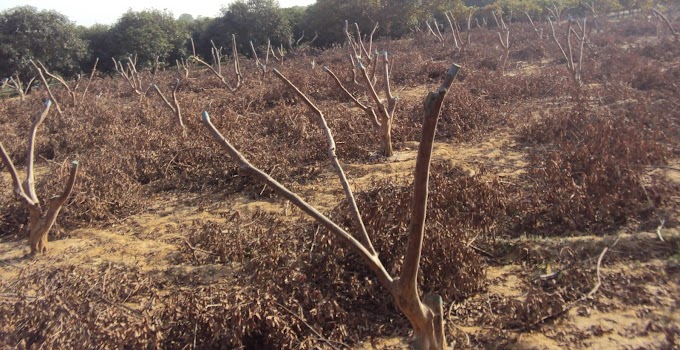T(caps)he word vinegar has been derived from the French word ‘vin’ meaning sour and ‘aiger’ meaning wine. The vinegar contains acetic acid and the Latin word ‘acetum’ also means sour wine. These French and Latin words indicate the first vinegar was probably a result of spoiled wine and its production is as old as wine. Thus vinegar is the oldest known fermented liquid product which is obtained from oxidative fermentation of ethanol solution by acetic acid bacteria. According to Cruess (1958) vinegar is a condiment made from various sugary and starchy materials by alcoholic and subsequent acetic fermentation. According to Codex Alimentarius Commission “ Vinegar is a liquid fit for human consumption, produced from a suitable raw material of agricultural origin, containing starch, sugars or starch and sugars by the process of double fermentation, alcoholic and acetous and contains a specific amount of acetic acid.” Acetic acid is the predominant flavouring and antimicrobial component in vinegar and good quality vinegar should contain about 5% acetic acid. In the United States legally vinegar must contain at least 4% acetic acid resulting from acetic acid fermentation of ethanol containing substrates. Vinegar is traditionally used as a food preservative because it retards microbial growth and contributes sensory properties to a number of foods.The acetic acid present in vinegar provides antiseptic and germicidal properties to vinegar and inhibits bacterial growth. The fruit vinegar has unique flavours and is superior to synthetic vinegars.
Vinegar bacteria
Vinegar bacteria are also known as acetic acid bacteria because they cause acetic acid fermentation. A variety of bacteria are able to lead acetic acid fermentation but the bacteria belonging to the genus Acetobacter and Gluconobacter are used commonly in vinegar making.The Acetobacter aceti are the most common bacteria used in vinegar preparation. They are Gram-negative, ellipsoidal to rod-shape and are able to oxidise ethyl alcohol (C2H5OH) into acetic acid (CH3CO2H) under aerobic conditions at 27-370C.The Acetobacter spp. are better acetic acid producers and have inherent capacity to oxidise ethanol to acetic acid but they oxidise acetic acid to CO2 and H2O due to over-oxidation which is not a problem with Gluconobacter spp. The A. pasterianus. A. polyoxogenes, A. europaeus, A. xylinus, A. intermedius and A. lovaniensis which is commonly used in Chinese vinegar are isolated from raw vinegar and found to be involved in acetic acid fermentation. The acetic acid bacteria tolerate alcohol and 6-8% alcohol in mash is better for their activity. The bacteria involved in acetic acid fermentation were called Mycoderma aceti in 1862 by Pasteur. The acetic acid bacteria have been classified in the family Acetobacteriaceae and Gluconobacter in the ninth edition of Bergey’s Manual of Systematic Bacteriology.
Mother of Vinegar
Mother vinegar is a thick layer of substances containing cellulose and acetic acid bacteria. The layer is formed on fermenting mash and it is removed when it becomes heavy enough to fall.. Mother vinegar is a live starter that can convert ethanol to vinegar.
Mash in Vinegar Preparation
The alcoholic solution used for vinegar preparation is called ‘mash’. The mash contains ethanol and some acetic acid. The sum of ethanol (vol. %) and acetic acid (g/100 ml) is called total mash concentration which gives maximum acetic acid concentration after complete fermentation. The quotient of the total mash concentration indicates the acetic acid concentration yield.
Pasteurisation of vinegar
The vinegar is pasteurised to preserve and inhibit the oxidation of acetic acid into CO2 and water by checking the activity of acetic acid bacteria. In the process vinegar is filtered through cheesecloth to remove the mother of vinegar film and other suspending materials then heated and filled into sterilised bottles. The capped bottles are put in hot water both and pasteurised at 140 – 1600F for 30 minutes. The pasteurised vinegar can last for several years under normal conditions.
Ageing of Vinegar
Fresh raw vinegar is a turbid liquid and sharp biting in taste. Vinegar becomes mellow from a strong sharp bite and develops pleasant flavour and aroma after ageing in wooden barrels for 3-6 months. The aged vinegar must be deprived of O2 otherwise acetic acid could convert into CO2 and water.
Flavouring of Vinegar
The garlic, ginger and herbs are added to homemade vinegar for flavouring. The flavouring substances are put into a cheesecloth bag that is left into vinegar 1-4 days to get desired strength of flavouring. The bag is removed after extracting the flavouring compounds into vinegar.
Acetic acid production in vinegar
The food grade acetic acid in vinegar is produced from starchy substances or sugar in the two steps fermentation: In the first step alcoholic fermentation takes place at 30-320C in which sugar is converted to ethanol in anaerobic condition by yeasts Saccharomyces cerevisiae. The starch converts first to sugar by amylase enzymes if starchy substances are used in place of sugars in vinegar making-
Conversion of starch to sugar by amylase enzymes
(C6H10O5 )H2O → C6H12O6
Starch Sugar
Conversion of sugars to ethanol by yeasts
C6H12O6 → 2CH3CH2OH + 2CO2
Glucose Ethanol
The second and last step is performed at 27-370C temperature with the help of acetic acid forming bacteria Acetobacter aceti aerobically in which acetic acid is produced in following two sub steps-
Aerobic conversion of ethanol to hydrated acetaldehyde
CH3CH2OH + ½O2 → CH3CHO + H2O
Ethanol Acetaldehyde
Dehydrogenation of acetaldehyde to acetic acid aerobically by aldehyde dehydrogenase enzyme
CH3CHO + ½O2 → CH3COOH
Acetaldehyde Acetic acid
Theoretically 1g glucose yields 0.67g acetic acid but some glucose is consumed by acetic acid bacteria and some remains unconverted into acetic acid therefore practical yield of acetic acid in vinegar is always less than calculated theoretical yield.
Vinegar aroma and quality
The processing method, raw materials and ageing influence the organoleptic properties of vinegar. The brewed vinegar not only contains acetic acid but it also contains Citric acid, lactic acid, tartaric acid and malic acid. There were about fourteen volatile compounds found in vinegar including Acetaldehyde, methanol, 1-propanol, ethyl propionate, 3-methyl-1-butanol, 2-methyl-1-butanol. The acetic acid and ethyl acetate are the major compounds in vinegar.
Vinegar strength
The vinegar strength is described in the term ‘Grain strength. Gain is ten times the percentage of acetic acid present in vinegar For example, 100 grain vinegar contains 10% acetic acid in other words vinegar having 10 percent acetic acid is termed as vinegar of '100 grain strength’.
Types of Vinegar (link)









